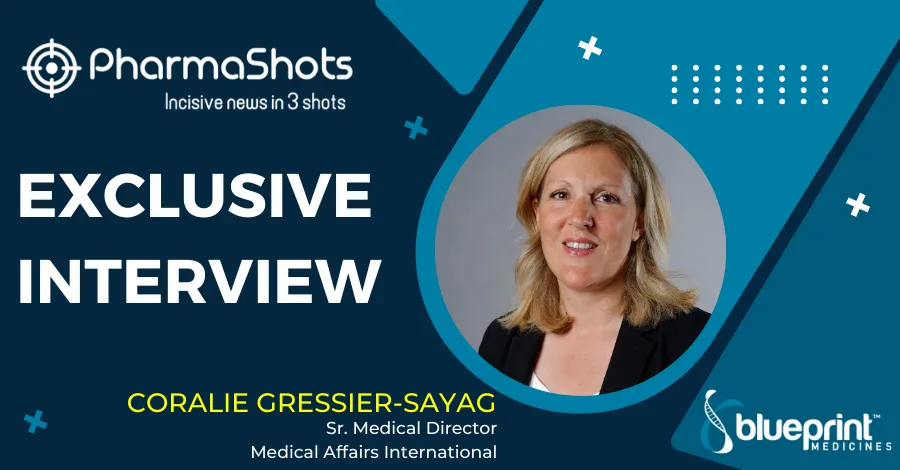
Exclusive Interview with PharmaShots: Jonathan Benjamin of Atreca Share Insight on the Data of ATRC-101 to Treat Solid Tumor
In an interview with PharmaShots, Jonathan Benjamin, MD, Ph.D., Senior Vice President & Clinical Research of Atreca shared his views on the initial data from the dose-escalation portion of its ongoing P-Ib trial for ATRC-101 to treat solid tumor
Shots:
- The ongoing P-Ib trial evaluates ATRC-101 in patients with solid tumors & 26 patients had been dosed in a trial as of data cut-off date Jul 16, 2021
- The initial data demonstrated anti-tumor activity, disease control is associated with ATRC-101 target expression, preliminary biomarker analysis is consistent with proposed MoA, ATRC-101s half-life (10.5 days). The therapy was well-tolerated at all doses & no DLTs were observed
- The company expects to report additional data from monothx. in a P-Ib trial & from combination cohorts evaluating ATRC-101 + pembrolizumab in 2022. Additionally, the ATRC-101 + CT combination cohort is expected to start in late 2021 & results are expected in late 2022
Tuba: Discuss the study design of the P-Ib trial evaluating ATRC-101.
Jonathan: The Phase 1b trial is an open-label basket study with multiple ongoing and planned expansion cohorts. The trial began with a dose-escalation portion following a 3+3 design and reported data from this portion of the trial in July. Enrollment in the dose escalation was limited to participants with tumor types displaying greater than 50% reactivity to ATRC-101 in preclinical studies. The primary objective was to characterize the safety, with key additional exploratory objectives of determining a maximum tolerated or recommended dose for expansion, measuring initial clinical activity, and characterizing predictive and pharmacodynamic biomarkers in blood and tumors.
Tuba: Highlights the initial data from the dose-escalation portion of your ongoing P-Ib trial evaluating ATRC-101?
Jonathan: ATRC-101 exhibited anti-tumor activity in the dose-escalation portion of the study, consistent with the proposed MOA, and was well-tolerated at all doses tested with no DLTs observed. Stable disease was observed in 8 of 20 participants evaluable for tumor assessment, with 4 of those achieving a reduction in the sum of target lesion diameters. Among those evaluable for tumor assessment AND target expression, stable disease was observed in 3 of 6 participants with an H-score (a commonly used metric of membrane staining) greater than or equal to 50, but only in 1 of 9 with an H score less than 50, indicating a relationship between target expression and activity. Preliminary biomarker data, particularly CD8+ T cell expansion in the peripheral blood, supported the proposed MOA. The half-life of ATRC-101 was dose-proportional with a 10.5-day half-life.
Tuba: Shed some light on the unique mechanism, RoA of ATRC-101?
Jonathan: We believe ATRC-101 acts via a novel MOA that we term Driver Antigen Engagement, whereby systemically dosed ATRC-101 antibody binds to and delivers its ribonucleoprotein (RNP) tumor target to the myeloid cells of the innate immune system resident in the tumor, activating those cells, leading to a remodeling of the tumor microenvironment. Those cells then further initiate an adaptive immune response against the tumor. This overall phenomenon of activation of the innate immune system leading to an adaptive immune response directed to perceived non-self antigens, is well-known in human biology. The Key is that ATRC-101, by engaging its target in the tumor, then generates cytotoxic CD8+ T cells downstream that destroy tumor in preclinical models. Therefore, we believe drugs that have efficacy in cancer by acting on T cells should work well with ATRC-101.
(Not sure if the question meant to ask about RoA of ATRC-101, but if so, it is administered via intravenous infusion.)
Tuba: Explain briefly about RNP tumor antigen? What it does after incorporating into the innate immune system?
Jonathan: ATRC-101 binds to a novel, tumor-specific ribonucleoprotein (RNP) complex found in a majority of patient samples from multiple tumor types, including ovarian, non-small cell lung, colorectal and breast cancer, as well as acral melanoma. RNP complexes are typically intracellular, but the ATRC-101 target antigen is detectable on the surface of tumor cells. Importantly, we have demonstrated that the expression of the target of ATRC-101 can be induced via cellular stress driven by chemotherapy.
Tuba: Did you think ATRC 101 has the potential to change clinicians approaches to cancer indications?
Jonathan: We are encouraged by results from the dose-escalation phase of the trial and believe that ATRC-101 has potential in several tumor types, both as monotherapy and combination with checkpoint inhibitors or chemotherapy. With both a novel target and MOA, we believe that if supported by appropriately designed and successful clinical trials, ATRC-101 may have the potential to change the approach to the treatment of several solid tumor cancers with high unmet needs.
Tuba: When Atreca can expect its additional monotherapy data, pembrolizumab combination & chemotherapy combination data?
Jonathan: We expect to report additional monotherapy data in the first half of 2022, pembrolizumab combination data in mid-2022, and chemotherapy combination data in late-2022.
Tuba: Can you share the details of the preliminary biomarker evaluation which supports the mechanism of ATRC 101?
Jonathan: Most notably, we observed CD8+ T cell expansion in peripheral blood associated with target expression, consistent with the proposed MOA. Given the early nature of the dataset, we also presented a case study from an ovarian cancer patient enrolled in the trial showing a marked influx of CD8+ T cells pre- and post-dosing biopsies, mirroring what was observed in animal models. The case study participant also showed spikes in the cytokines IFN-g and G-CSF, respectively, on day 2 after dosing, once again similar to what was observed in the mouse model.
Tuba: What would be the targeted indications for ATRC-101? Share your strategy to advance the product in other stages of the clinical trial.
Jonathan: In the monotherapy cohorts, we have limited enrollment to tumor types that expressed target in over 50% of tumor samples evaluated preclinically, including ovarian, non-small cell lung, colorectal and breast cancer, as well as acral melanoma. The pembrolizumab combination will enroll patients with HNSCC, esophageal SCC, HCC, urothelial cancer, NSCLC, and melanoma.
Key to our clinical strategy is the development of a diagnostic to select patients based on target expression. We evaluated unselected patients for target expression in the dose-escalation portion of the trial and continue to do so in the ongoing cohorts, but the FDA requires additional data to validate a potential diagnostic assay before permitting its use for patient selection in clinical trials. Our ongoing cohorts continue to enroll patients on an unselected basis to collect additional data on efficacy, biomarkers, and to help us refine the target expression cutoff point for future trials. As the data matures, we plan to refine our strategy regarding specific indications, but at this point, it is too early to comment.
Tuba: Are you open to collaboration to expand the potential of therapies in other indications?
Jonathan: We are currently developing ATRC-101 independently. Elsewhere, we are actively utilizing partnerships with the potential to build our oncology pipeline. We currently have an ongoing collaboration with Xencor to develop bispecific T cell engager antibodies, and we are working with undisclosed partners to access their technologies to develop ADCs with both toxins and immunostimulatory agents for cancer treatment.

About Author: Dr. Jonathan Benjamin is the Senior Vice President & Clinical Research at Atreca. Dr. Benjamin is board-certified in Hematology and Medical Oncology. He received his AB from Harvard College and MD and Ph.D. from New York University. He completed his clinical training and performed post-doctoral research at the University of California, San Francisco

This content piece was prepared by our former Senior Editor. She had expertise in life science research and was an avid reader. For any query reach out to us at connect@pharmashots.com














